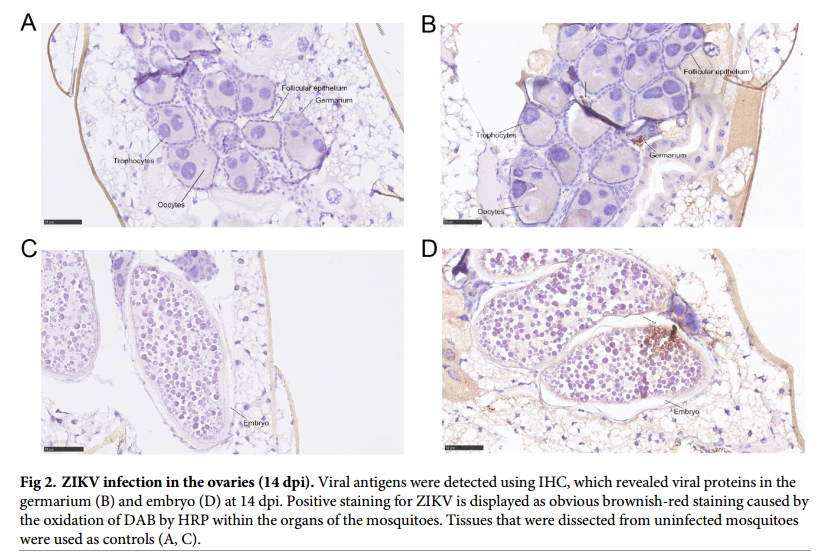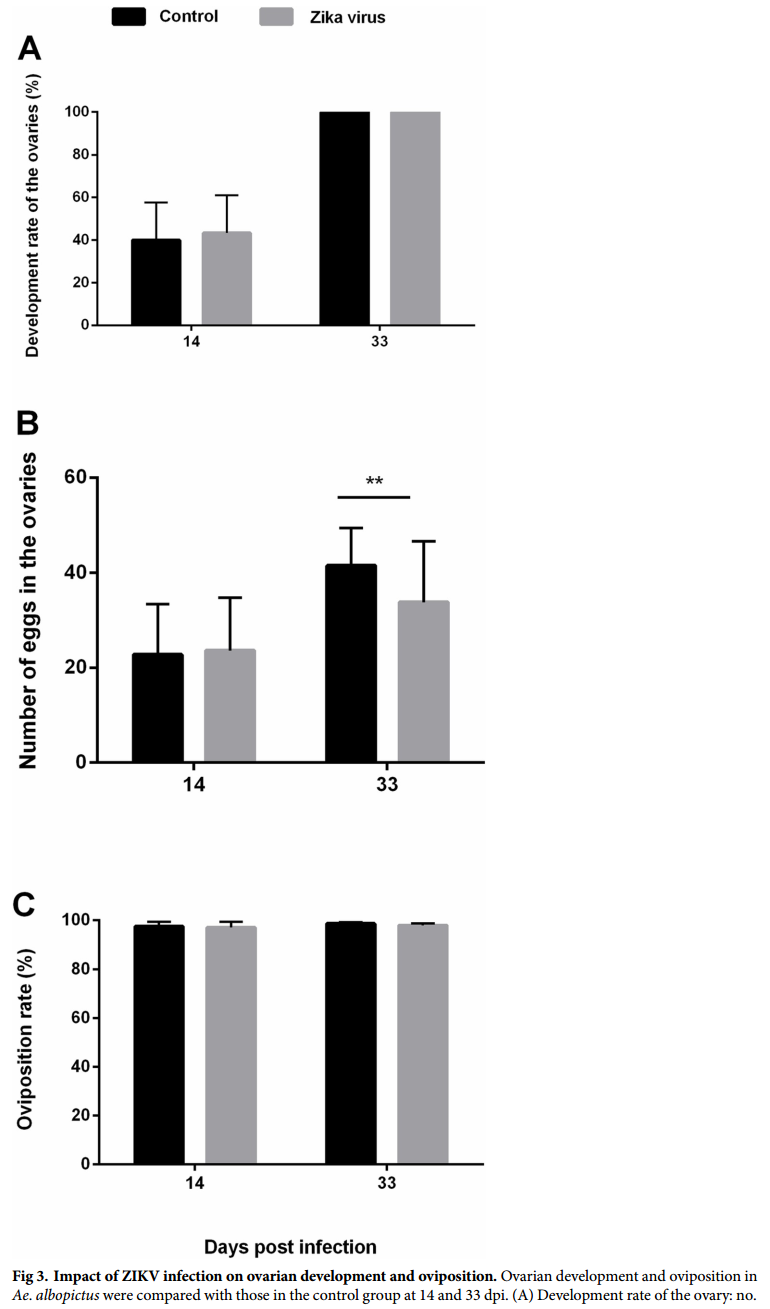Zetian Lai, Tengfei Zhou, Jiayong Zhou, Shuang Liu, Ye Xu, Jinbao Gu, Guiyun Yan, Xiao-Guang Chen*
ABSTRACT
Background: Zika virus (ZIKV) is an arthropod-borne flavivirus transmitted by Aedes mosquitoes. Aedes albopictus is an important vector of ZIKV worldwide. To date, most experiments have focused on the vertical transmission of ZIKV in Ae. aegypti, while studies on Ae. albopictus are very limited. To explore vertical transmission in Ae. albopictus, a series of laboratory studies were carried out.
Methodology/principal findings: In this study, Ae. albopictus were blood-fed with ZIKV-infectious blood, and the ovaries and offspring viral infection rates were analyzed by reverse transcription PCR (RT-PCR), real-time reverse transcription PCR (RT-qPCR) and immunohistochemistry (IHC). ZIKV was detected in the ovaries and oviposited eggs in two gonotrophic cycles. The minimum filial egg infection rates in two gonotrophic cycles were 2.06% and 0.69%, and the effective population transmission rate was 1.87%. The hatching, pupation, and emergence rates of infected offspring were not significantly different from those of uninfected offspring, indicating that ZIKV did not prevent the offspring from completing the growth and development process. ZIKV was detected in three of thirteen C57BL/6 suckling mice bitten by ZIKV-positive F1 females, and the viremia persisted for at least seven days.
Conclusions/significance: ZIKV can be vertically transmitted in Ae. albopictus via transovarial transmission. The vertical transmission rates in F1 eggs and adults were 2.06% and 1.87%, respectively. Even though the vertical transmission rates were low, the female mosquitoes infected via the congenital route horizontally transmitted ZIKV to suckling mice through bloodsucking. This is the first experimental evidence of offspring with vertically transmitted ZIKV initiating new horizontal transmission. The present study deepens the understanding of the vertical transmission of flaviviruses in Aedes mosquitoes and sheds light on the prevention and control of mosquito-borne diseases.
PLoS Negl Trop Dis. 2020 Oct 15;14(10):e0008776.
DOI : https://doi.org/10.1371/journal.pntd.0008776

